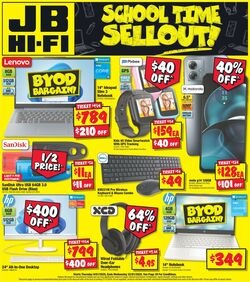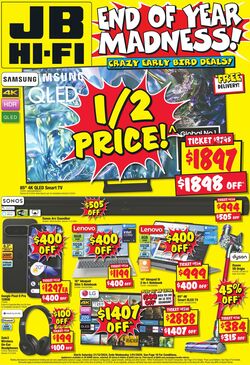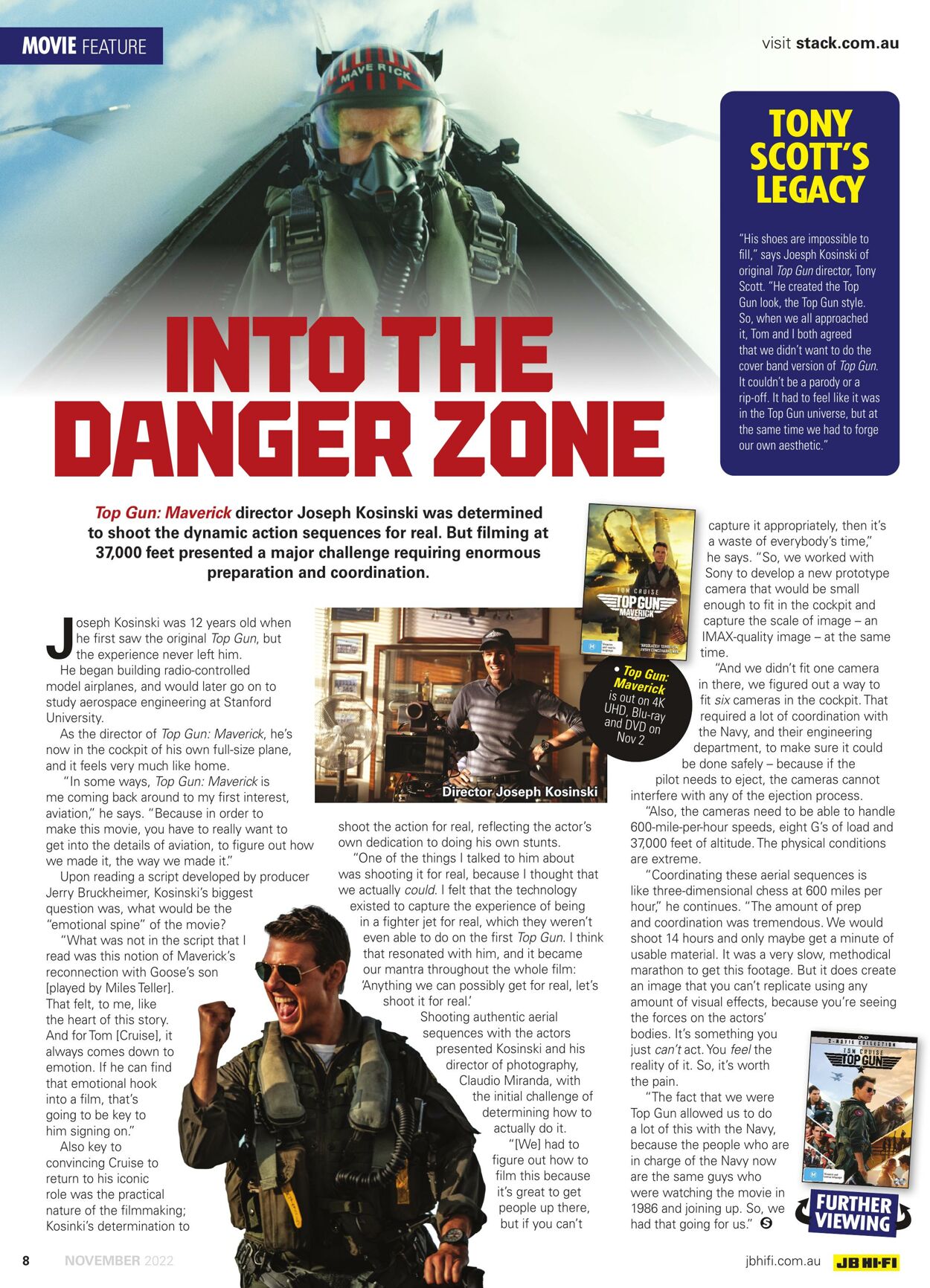













Products in this catalogue
Top Gun: Maveri he first saw the original Top Gun, but the experience never left him. He began building radio-controlled model airplanes, and would later go on to study aerospace engineering at Stanford University. As the director of Top Gun: Maverick, he's now in the cockpit of his own full-size plane, and it feels very much like home. In some ways, Top Gun: Maverick is me coming back around to my first interest, aviation,” he says. “Because in order to make this movie, you have to really want to get into the details of aviation, to figure out how we made it, the way we made it” Upon reading a script developed by producer Jerry Bruckheimer, Kosinski's biggest question was, what would be the “emotional spine” of the movie? “What was not in the script that | read was this notion of Maverick’s reconnection with Goose's son [played by Miles Teller]. That felt, to me, like the heart of this story. And for Tom [Cruise], it always comes down to emotion. If he can find that emotional hook into a film, that's going to be key to him signing on.” Also key to convincing Cruise to return to his iconic role was the practical nature of the filmmaking; Kosinki’s determination to iste Kosinski was 12 years old when director Joseph Kosinski was determined to shoot the dynamic action sequences for real. But filming at 37,000 feet presented a major challenge requiring enormous preparation and coordination. Pe ieee eee LCS shoot the action for real, reflecting the actor's ‘own dedication to doing his own stunts. “One of the things | talked to him about was shooting it for real, because | thought that we actually could. | felt that the technology existed to capture the experience of being in a fighter jet for real, which they weren't even able to do on the first Top Gun. | think that resonated with him, and it became our mantra throughout the whole film: ‘Anything we can possibly get for real, let's shoot it for real’ Shooting authentic aerial sequences with the actors presented Kosinski and his director of photography, Claudio Miranda, with the initial challenge of determining how to actually do it. “[We] had to figure out how to film this because it's great to get people up there, but if you can't visit stack.com.au capture it appropriately, then it's a waste of everybody's time,” he says. “So, we worked with Sony to develop a new prototype camera that would be small enough to fit in the cockpit and capture the scale of image - an IMAX-quality image — at the same time. “And we didn’t fit one camera in there, we figured out a way to fit six cameras in the cockpit. That required a lot of coordination with the Navy, and their engineering department, to make sure it could be done safely — because if the pilot needs to eject, the cameras cannot interfere with any of the ejection process. “Also, the cameras need to be able to handle 600-mile-perhour speeds, eight G's of load and 37,000 feet of altitude. The physical conditions are extreme. “Coordinating these aerial sequences is like three-dimensional chess at 600 miles per hour” he continues. “The amount of prep and coordination was tremendous. We would shoot 14 hours and only maybe get a minute of usable material. It was a very slow, methodical marathon to get this footage. But it does create an image that you can’t replicate using any amount of visual effects, because you're seeing the forces on the actors’ bodies. It's something you just can’t act. You feel the reality of it. So, it's worth the pain “The fact that we were Top Gun allowed us to do a lot of this with the Navy, because the people who are in charge of the Navy now are the same guys who were watching the movie in 1986 and joining up. So, we had that going for us.” © jbhifi.com.au JBHEFI
| Name | Details |
|---|